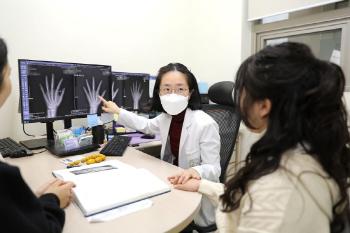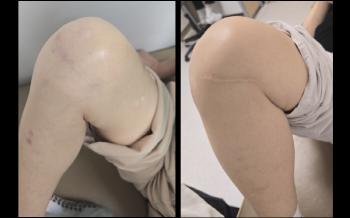What's the difference with Parkinson's disease?
|
The causes of tremors are conditions that cause tremors, such as Parkinson's disease and muscular tautism, medical conditions such as hyperthyroidism and liver dysfunction, physiological causes such as fatigue, tension, stress, excessive caffeine intake, and tremors without any specific cause.
Cho Ki-yong, director of the Department of Neurology at Good Three Sun Hospital, "'Essential Progress' is the most common form of motor disorders and is also called benign tremors, familial tremors, and idiopathic tremors. It is known to occur in about 4% of the population over the age of 40, and the incidence rate increases as the age increases."
In particular, the incidence rate is highest in teenagers and 50s, but it can occur in all age groups, and about 50% of them tend to inherit, so close family members often have similar symptoms.
◇What is the difference between intrinsic progression and Parkinson's disease?
Symptoms are usually observed to have a similar degree of tremors in both arms, and the hands or arms shake regularly during a specific posture or movement. The characteristic that distinguishes Parkinson's disease is that there are no symptoms of tremors while sitting or lying comfortably with the arms or body relaxed.
In addition to hands and arms, the chin, lips, and head may shake or the voice may tremble, and the symptoms are light in the early stages, so there is no difficulty in performing daily life, but as you get older, the intensity of your tremors intensifies, making it difficult to perform daily life and social activities and interpersonal relationships.
The diagnosis of 'Inherent Progress' is made through listening to a detailed medical history, neurological examinations, and imaging tests such as CT and MRI. Ask in detail about the timing of the tremor, the situation and posture of the tremor, the pattern of the tremor, the family history, and whether or not you are taking tremor-inducing drugs, and check for tremor patterns and other neurological abnormalities through neurological tests. Brain CT or brain MRI can be performed to distinguish it from other diseases, and it can be diagnosed after checking for structural abnormalities in the brain.
◇Caution for taking drugs for the elderly and heart disease
Beta-receptor blockers are most commonly used for drug treatment, but they have side effects that lower blood pressure and slow heart rates, so elderly patients and patients with heart disease need to be careful about taking them. When you are nervous or psychologically anxious, symptoms may worsen, so stabilizers are sometimes used together.
There is no cure for drug treatment, but the therapeutic response is good in most patients. If the symptoms are very severe or there is no response to drugs, surgical treatment can be considered, deep brain stimulation that suppresses nerve circuits related to tremors by inserting electrodes into the brain, and high-intensity ultrasound surgery that reduces tremors by focusing ultrasound on the areas that cause tremors.
Manager Jo Ki-yong "There are cases where hand tremors are simply regarded as an aging phenomenon or an incurable disease, and treatment is given up. However, if accurate diagnosis and appropriate treatment are received, it will help improve symptoms and improve quality of life, so it is necessary to seek immediate treatment when there is tremor.
|
This article was translated by Naver AI translator.





